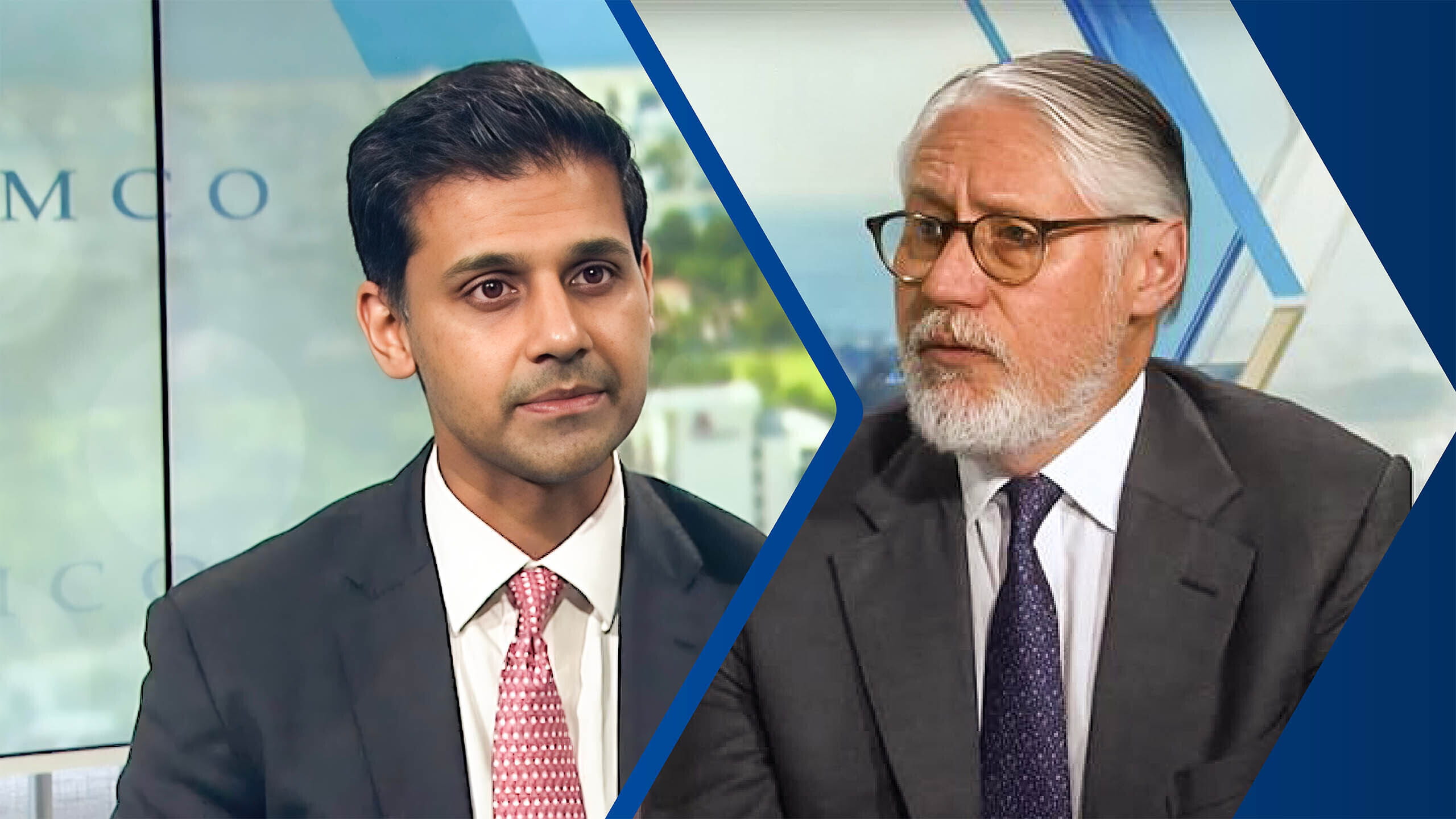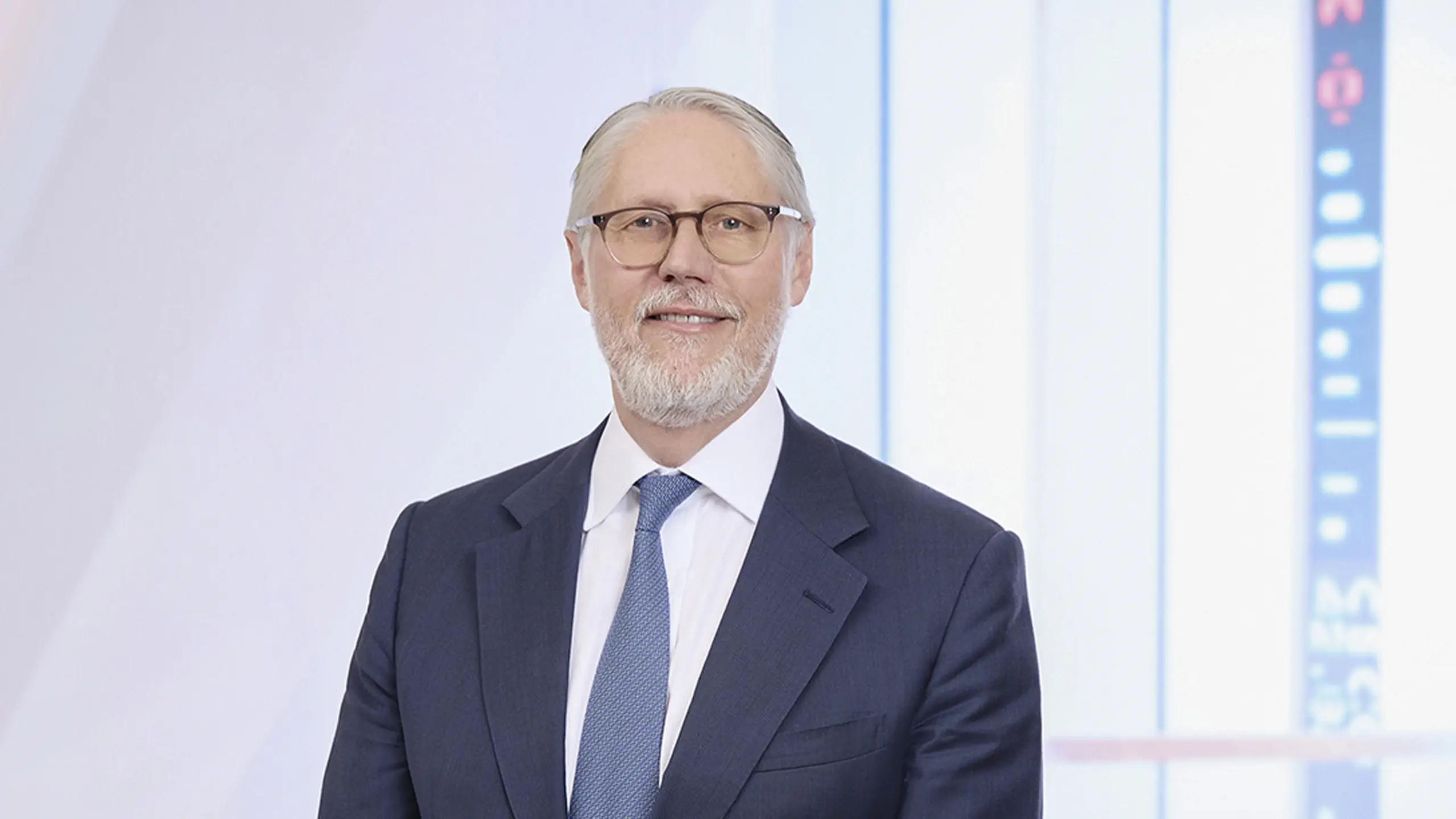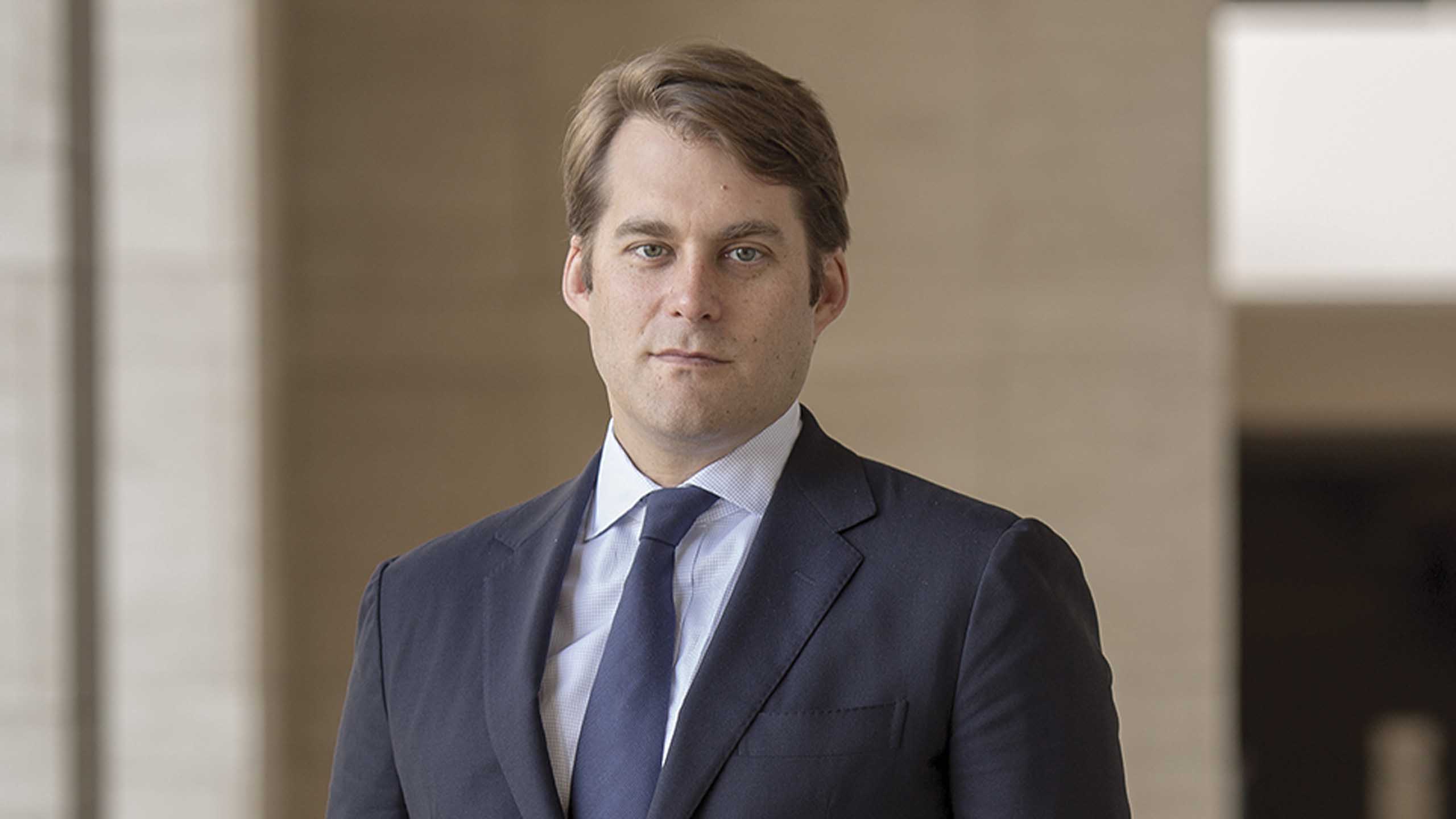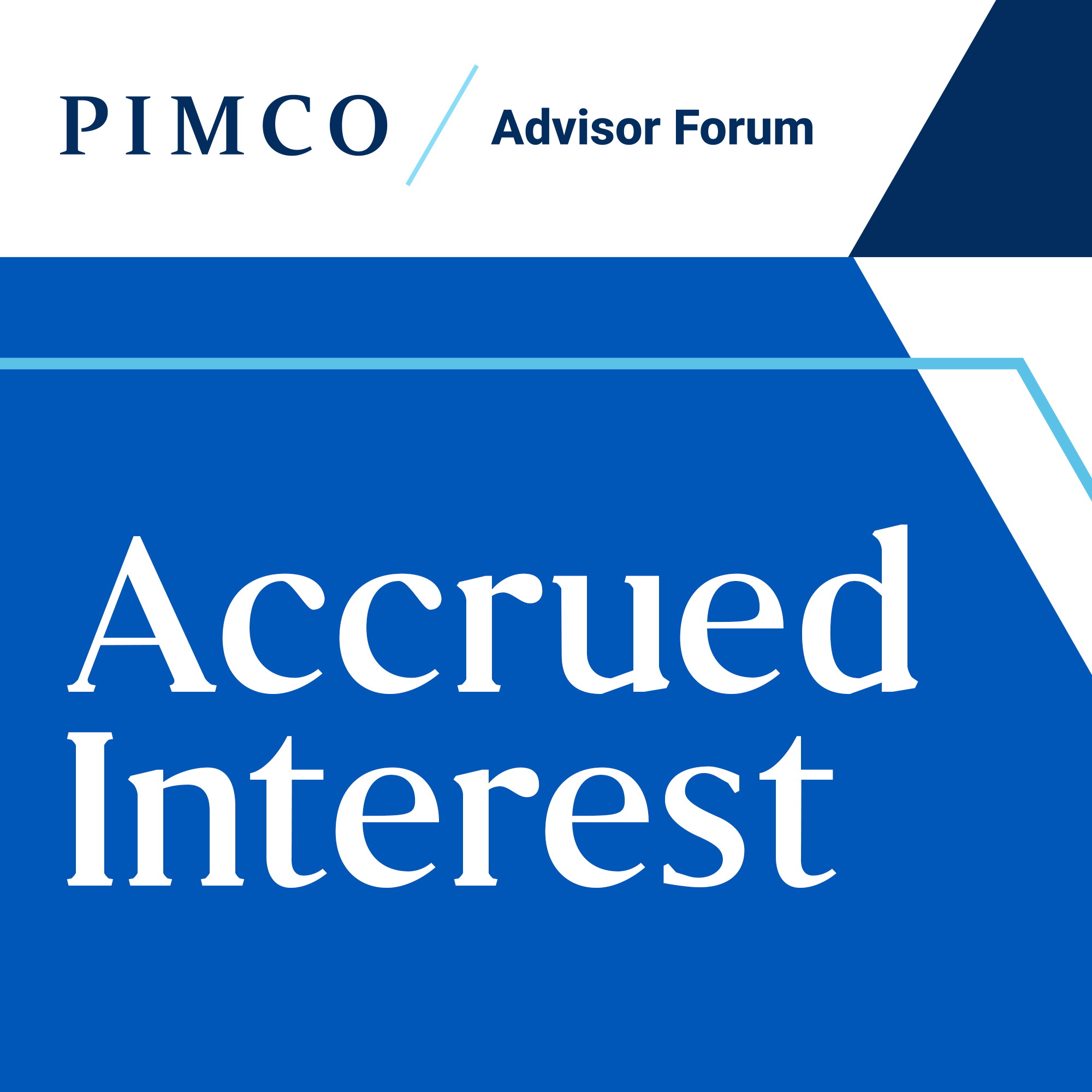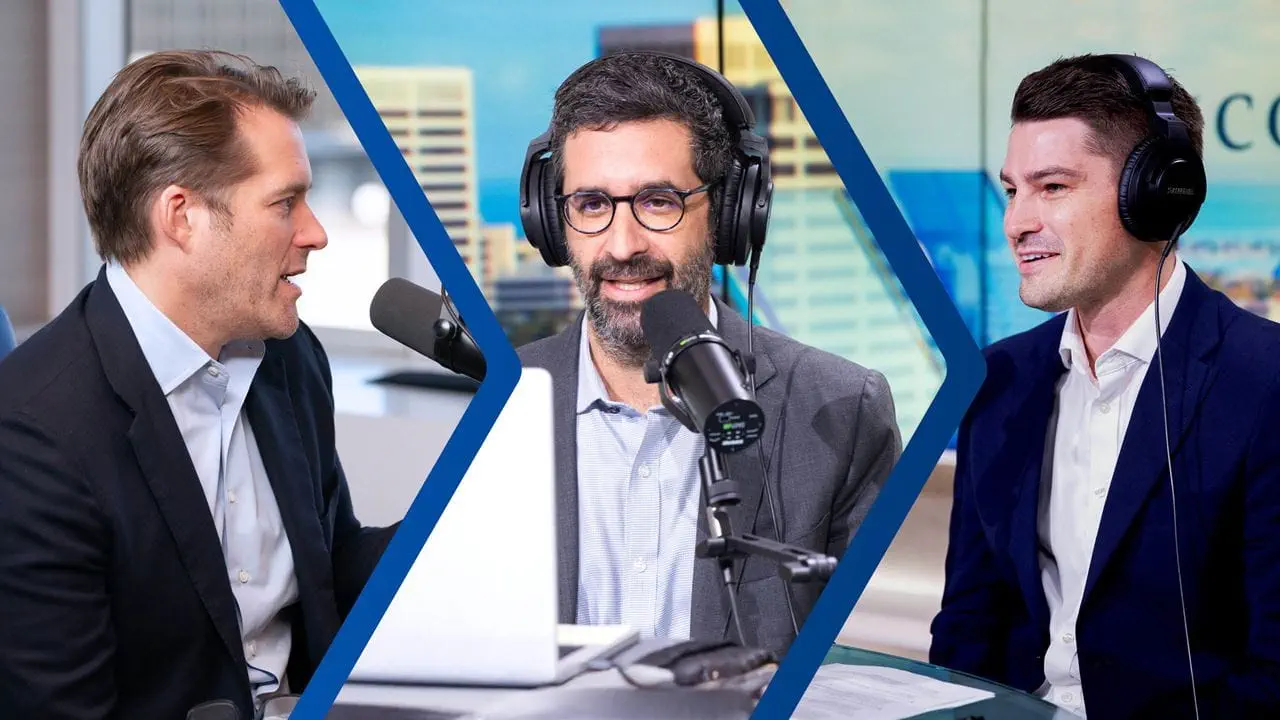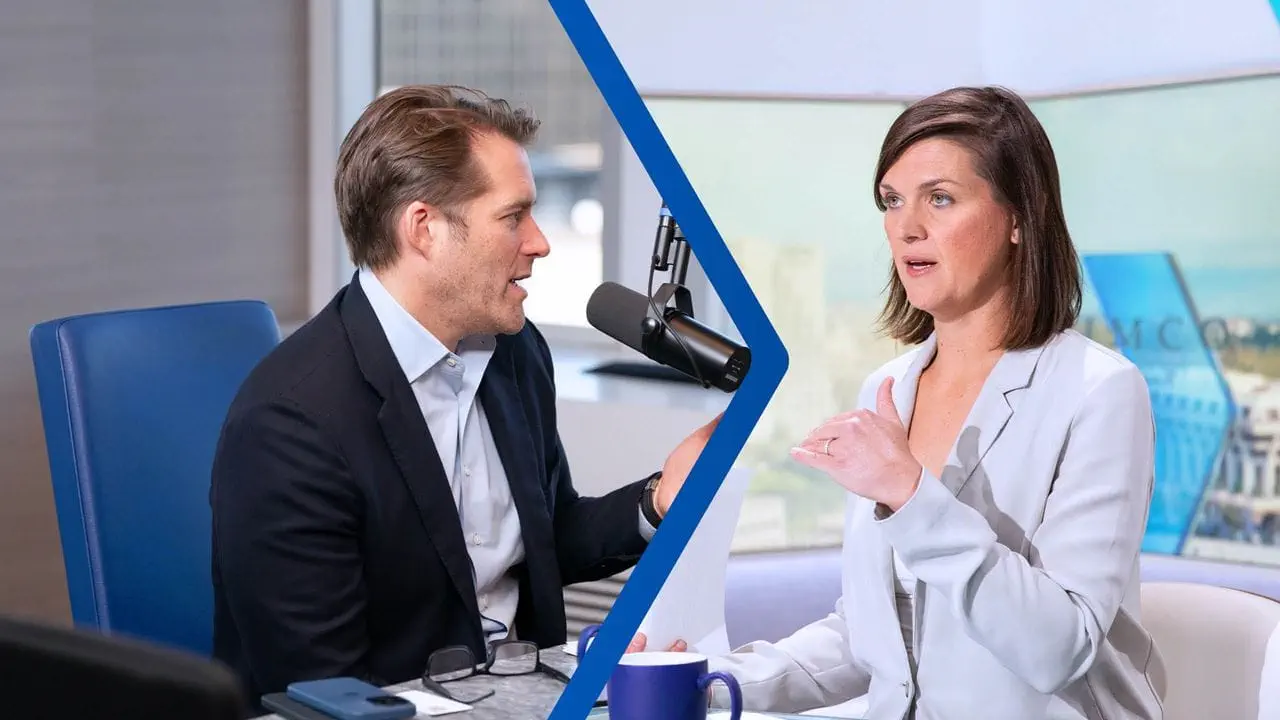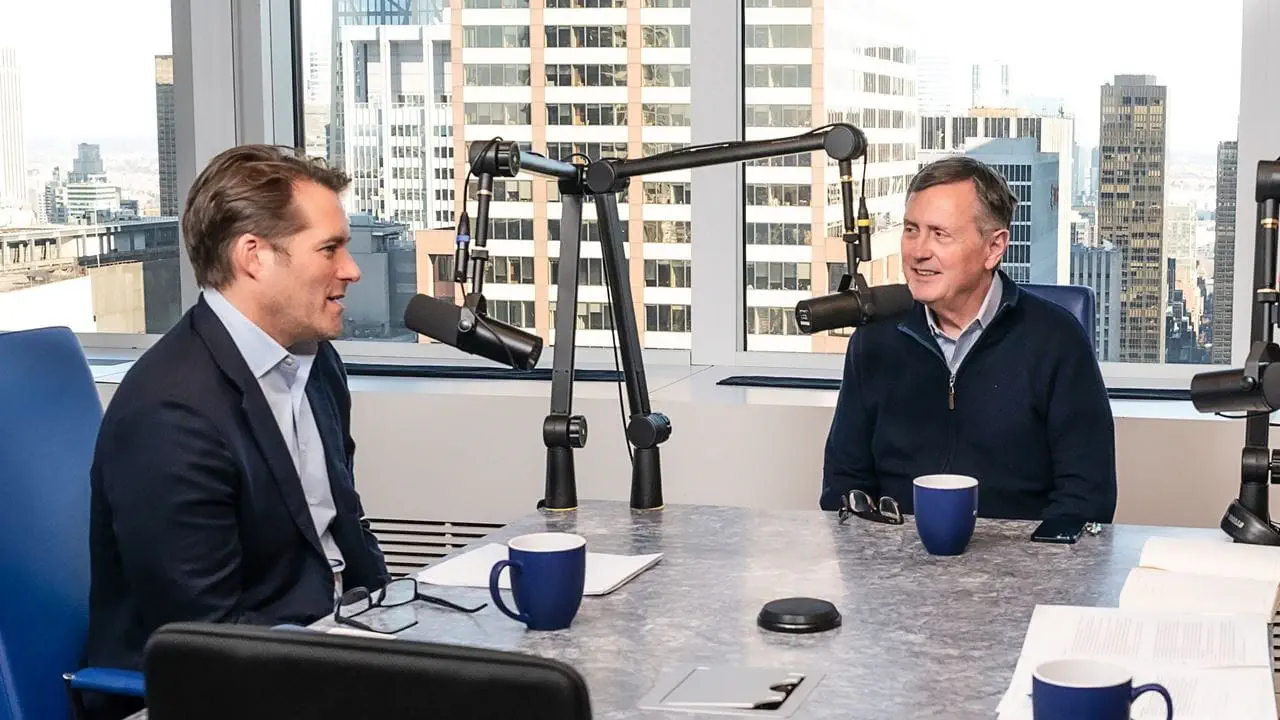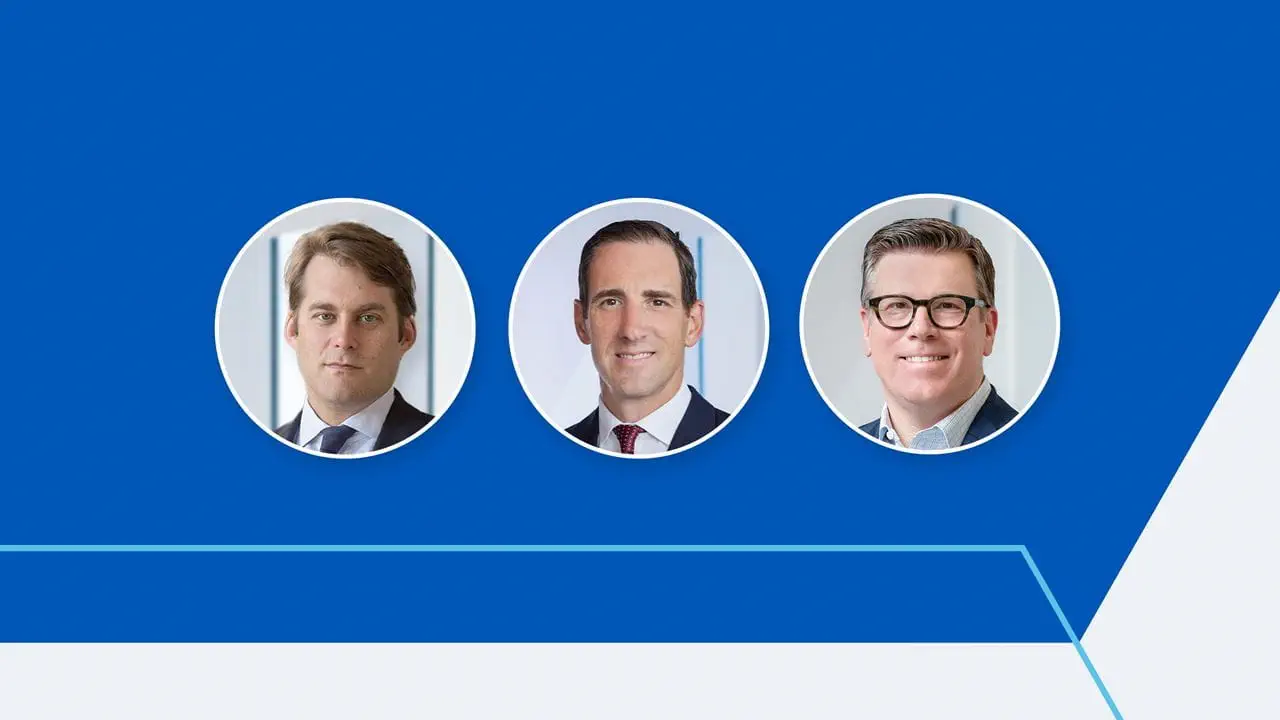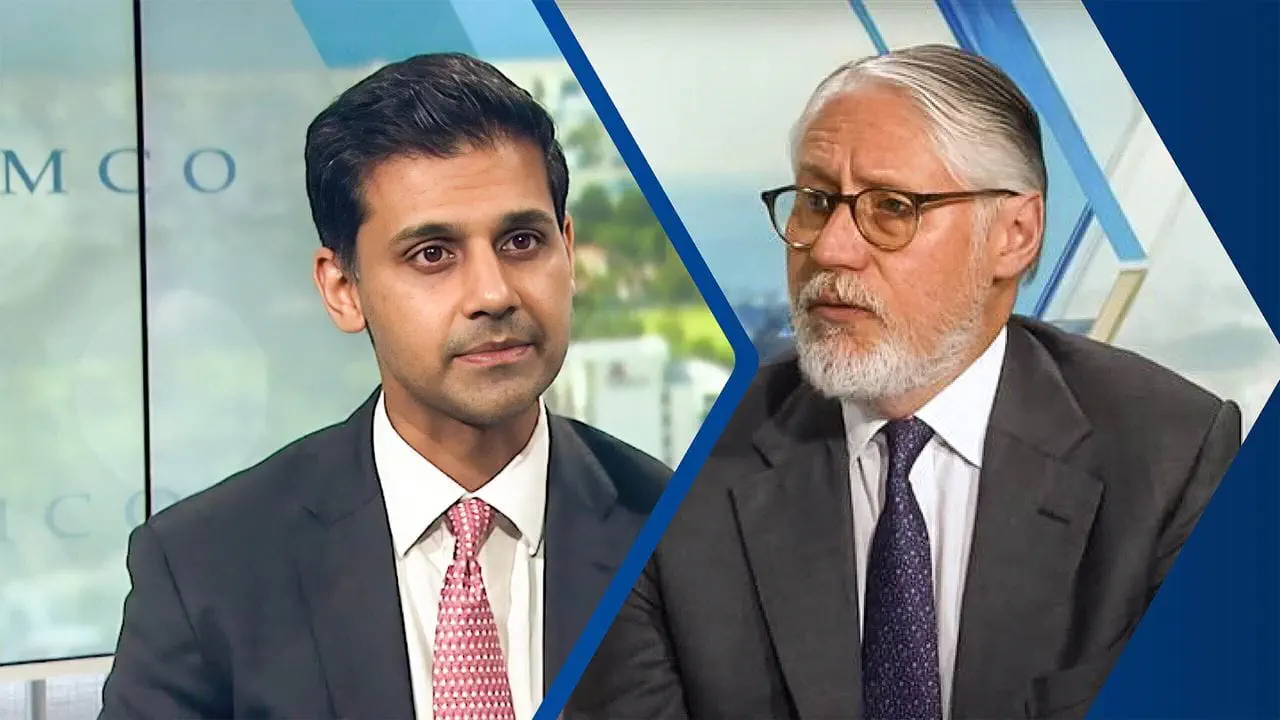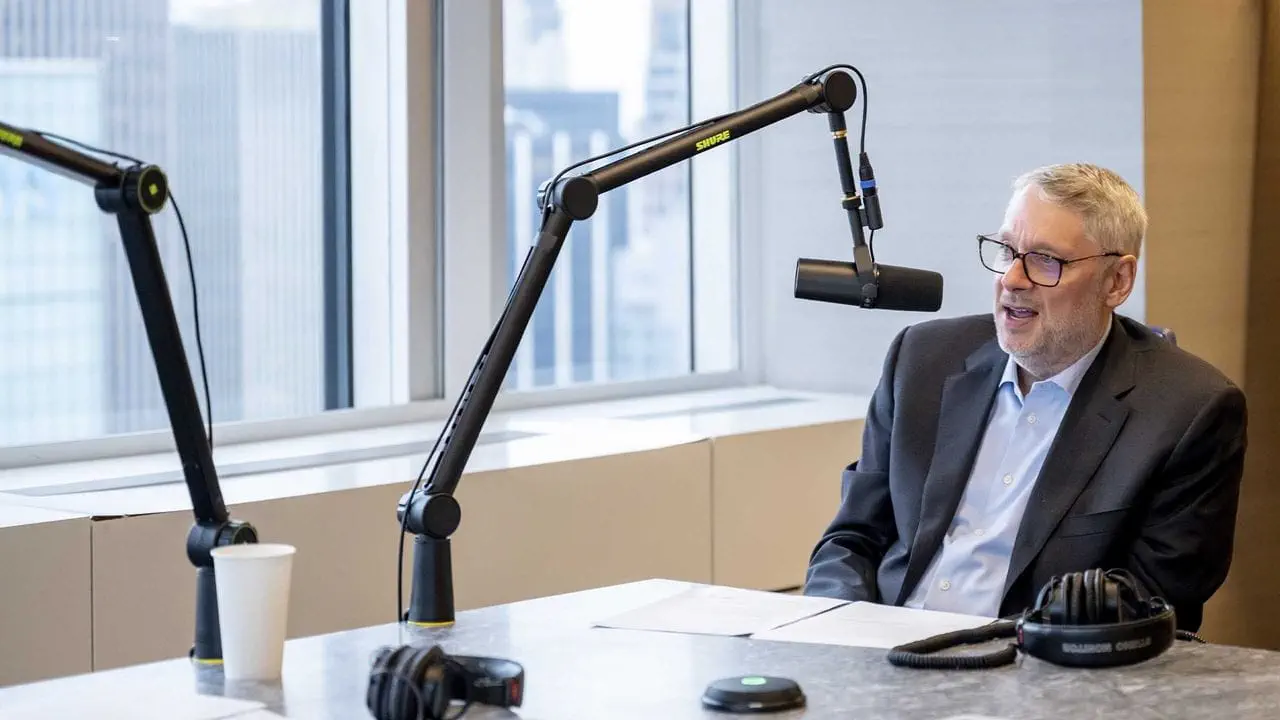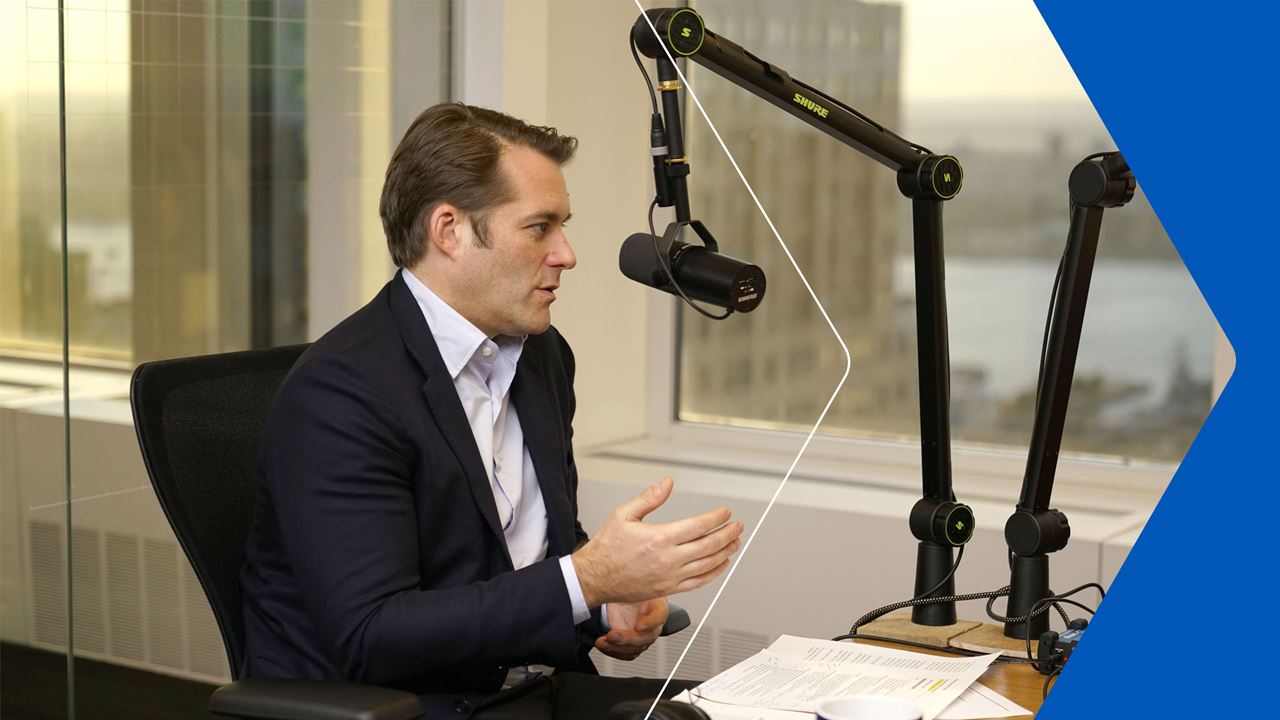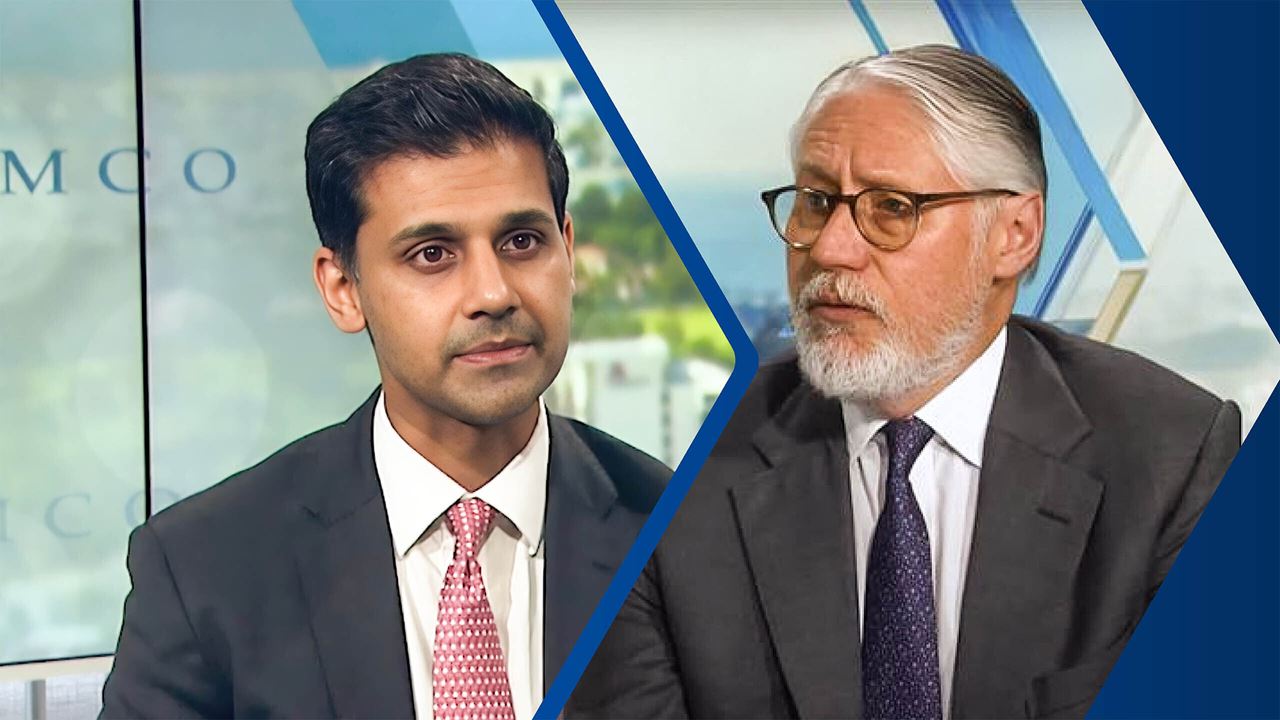Stay tuned after the conclusion of the podcast for additional important information.
RECORDED EPISODE:
GREG HALL: Hey everybody, welcome to accrued interest PIMCOs podcast dedicated to serving financial advisors and their clients. My name's Greg Hall. I head US Wealth Management here at PIMCO, and I'll be your host. Today's an extra credit episode. You've come to know these as typically shorter, although sometimes not so short episodes that we do in between our primary episodes, which we record monthly.
Today's is number two in a series that we have been featuring with Marc Seidner, who is our CIO of non-traditional strategies and Pramol Dhawan, who's our head of emerging markets.
Marc in heading non-traditional strategies, he manages some of the most flexible strategies at PIMCO, looking up and down out the yield curve and across geographies. Pramol with his background in emerging markets has a truly global view.
And for these exciting times, I think knows quite a bit about how countries deal with trade policy waxing or waning faith in currencies, tariffs and other aspects that have become really obviously part of our day-to-day dialogue. As we speak to you as advisors and as you speak to your clients. So, I can't think of a better pair to have on the pod today.
The discussion that we're going to have is about their latest piece, which is called Trade Wars and the US Dollar. We're recording this on April 24th, I should say it's 8:00 AM, Pacific time, so that you can timestamp me in case anything has happened in the interim period. It's a great conversation.
The gist of which is that there's a really good opportunity, we think, for US-based investors to think about global diversification as a way to counteract some of the volatility that's emerged in US markets. I think Marc and Pramol will have a very balanced perspective on the continuing appeal of the US Bond market, but the benefits of maybe looking at opportunities elsewhere in the world, and we'll go into that in some detail. I think that it's also a very strong support for active management, particularly in volatile times.
The ability to look beyond, say what a strict benchmark approach might yield up as investible opportunities, really gives you some areas where you can add value on behalf of your clients. And I think that comes out in the discussion. I hope you enjoy it. We'll be with you next month with a regularly scheduled program. We'll be with you, before that to the extent that volatility continues and newsworthy events come up where we feel like we can add some value to you and to your practice. As always, please visit us @pimco.com.
If you identify yourself as a financial advisor, you'll be taken to Advisor Forum which is our destination for you to find the information that you want most quickly and efficiently. And I've been asked to ask you, and I will to hit subscribe and follow us on the podcast platform of your choice. It's great to see those subscriber and listener numbers move upward for us, and it will help us continue to bring you this type of content on a monthly or more frequent basis. Thanks so much!
Marc, Pramol, welcome back to the pod! Great to see you again!
PRAMOL DHAWAN: Thanks for having us.
MARC SEIDNER: Great to be here! Thanks for having us again!
GREG HALL: Pramol, extra thanks to you for fighting your way through a cold and a fever this morning to join us. I, we will hear it in your voice as we go through the podcast, but appreciate you making the effort on behalf of our listeners, our clients. So the last time we had you guys on was late February and it was you published your last Perspectives piece which was entitled, Where to Look When Equities Are Priced for Exceptionalism.
And I just, I wanted to start off with a little bit of a scorecard here and for our listeners, I promise I'll do this even when the numbers don't go our way. But since you wrote that piece and since we talked about it on the pod S&P down about 10% from a peak of near 6,000, a local peak of near 6,000 to about 5380 as we record this.
Ten year, interestingly, despite all of the volatility and excitement that we've had over the last couple of months, pretty much unchanged around 4.3. The bonds using the Ag as a proxy up about 2% for the year and the dollar which will be the focus of today's conversation depending on which basket you look at down probably about six, 8% since we recorded.
So I think the advice you gave our listeners a couple months ago to look away from US equities, diversify into other asset classes, think about places to allocate capital that might be a little bit different than their existing portfolio construct. That was well taken, that was prescient. And this week we're going to talk about your new piece, trade wars and the US dollar.
So Pramol, maybe you can just do us the favor and outline the thesis of the latest piece.
PRAMOL DHAWAN: Yeah, thank, thanks very much, Greg! I think the piece is really guided around this notion of the end of US exceptionalism, and that in a multipolar world, a world where there are lots of geopolitical frictions and countries will have to invariably look more inbound then towards external agreements. That's a world in which the, we think the dollar can weaken and weaken quite substantially. And the starting conditions for the dollar is a currency that is substantially overvalued, about 20% overvalued over any sort of long-term metric. And that overvaluation comes directly as a result of US exceptionalism. So I think we want to try to articulate what we think us exceptionalism is first, and then sort of think about what that looks like going forward.
And to us, US exceptionalism was the result of an equilibrium in global financial markets where effectively the US spent a lot of money through large persistent deficits, and the rest of the world saved a lot of money, and those savings recycled back into US assets pushing the US dollar higher and pushing US equities higher. And that was the equilibrium that we had been in for the past decade or so.
And that was an equilibrium in which US assets obviously did substantially well and outperformed international assets. But it's really that equilibrium, Greg, that we're challenging right now. And it is certainly not to say that US assets need to be sold or dumped at any margin, but just to say that the, this is potentially the resurgence of international assets and that in a multipolar world, and I'll sort of hit pause on this point. In a multipolar world, it's really that diversification angle that we want to hit home on about non-dollar assets.
GREG HALL: When you say the dollar overvalued by any metric by 20%, that I think for a lot of people is kind of an ethereal concept. It's, how do you ground that in analysis?
PRAMOL DHAWAN: Yeah, you can look at it through long-term valuations of the fundamental exchange rate equilibrium. So sort of adjusting for all of the macroeconomic variables. You can dissect it through equity market outperformance versus global equity markets. So US equity markets have substantially outperformed global equity markets. I think the MSCI world now is 70% US corporates within it.
So it's sort of sucked in a loss of capital. But sort of backward looking valuation metrics will sort of coalesce around this sort of 15 to 25% type range where the dollar is overvalued, and particularly that's against developed market comparable current countries when sort of sidelining emerging markets for one point and really focusing on developed market peers here and do that analysis, you won't go too far wrong between 20% overvaluation.
GREG HALL: So you're try supply demand and you just, you look at historical trading versus baskets, you coalesce around this 15 or 20%. And then you said something interesting in sort of the beginning of your description of the piece, which is the end of US exceptionalism. And that's an interesting concept in its own right. Do we think this is the end? Because my impression of what's going on, and I'm not trying to make a politically loaded comment here at all, but much of what we've seen has been somewhat self-inflicted as opposed to what you might see in an emerging markets context of a more fundamental breakdown in the credit worthiness of a sovereign.
And I'm going to stop before I get way over my skis, given who I'm talking to. But do we think this is the end or given the fact that the President has indicated some willingness to walk back certain policies over the last few days since you published the piece, that this is still within the power of the administration to pull back from.
MARC SEIDNER: I mean, we in fact, sort of state that explicitly at the end of the piece, this is absolutely a self-inflicted wound, and it's quite possible. I mean, dollar trends tend to be very long and very significant. But as this is a self-inflicted wound, if there is trust built back in the system and the United States leadership amongst the world's elite countries, then it could very well reverse. I mean, this is obviously very fluid, very, very challenging situation for all of us to analyze and headlines change on a day-to-day basis. So some have said it's hard to put the genie back in the bottle.
It's hard to reshuffle the deck. But this is a self-inflicted wound that could be, can be corrected. Pramol can comment on the linkages to emerging markets, but a lot of the analysis that we've done over the past month or so indicate that periods in which US equities sell off US bond yields rise.
Or as a reminder, when yield rise, prices go down and the dollar goes down in value in a single day or over a single period are quite rare. I think it's 4, 5, 6% of the time. So it's quite a rare occurrence. So what we're experiencing on a day-to-day basis really is very, very unique. But as we've said, self-inflicted could reverse very quickly. Although I think there is a lingering question of how does one put the genie back in the bottle of trust in an existing, a world order that's existed for the last 80 or so years.
PRAMOL DHAWAN: And I would also add to that, Greg, that it almost doesn't matter about the narrative of whether exceptionalism is ended, whether it can continue or not. It doesn't matter as much. And let me try and articulate that a little bit. We'd mentioned in the last piece about vigilantism in the US bond market, this notion that the US was in a fragile equilibrium, that it has run persistent twin deficits, current account and fiscal deficits for a long period of time. And those deficits have by and large been financed from international money.
The valuations matter, they do, I would argue so do the technicals. And one of the most offside technical positions anywhere in global financial ecosystems right now, is foreign ownership of US assets, in particular US equity assets. They are so offside, so large, so dominant that it only takes a small reversal of those flows to significantly rebalance currency markets to significantly readjust bond premiums in US versus the rest of the world.
So the technicals matter a lot as well. And, and I would guide you to this point, and this was made to me by a client of ours that at our European client conference. For a European manager, a European asset manager, this recent bout of equity volatility, this drawdown in US equities, this was more painful for a European manager than the global financial crisis was. And that's saying something, more painful than the global financial crisis. And that's because during this time, the dollar did not rally as it has done in previous instances.
It actually sold off. So you lost money on your equities, the dollar sold off, you lost money on the dollar, and if you're so predisposed to hedge with 30 year treasuries, well, that was offered about 10 points as well. So you sort of lost on all end of your equilibrium and the size of the position that has gone into the US over the past decade or since the GFC has been substantial. It's about $9 trillion of foreign participation in US assets, predominantly equities but also fixed income in there as well.
Again, it only, markets tend to move on the second derivative, the marginal flow of information. And it's really what we're talking about here is European, Japanese foreign entities looking to rebalance and try and hedge some of their underlying US exposures, not necessarily selling them, but looking to hedge them, to immunize themselves from the currency volatility that Marc just spoke about.
MARC SEIDNER: Yeah. And just to build on that, Pramol talks about the technicals and the flows.
But even from an opportunity perspective, diversification isn't costing you very much. There are plenty of opportunities in global currencies to diversify away from the US dollar and not give much up in terms of carry. The global bond market opportunity set is enormous for the first time in 15 or so years. The international opportunities in many situations outweigh the attractiveness of bonds generally that we've said for a year or so now bonds are back and we continue to believe that, but it's not, that's not a predominant treasury view, that is a global interest rate view. The UK has had its moment. It's had its sort of existential debt crisis that was a couple years ago.
You can buy UK debt, which is now, the policies are pursuing some degree of fiscal discipline at yields greater than US Treasury yields Australian government bonds where debt to GDP is a fraction of US debt to GDP, even as a starting point when you take out even the direction over coming years with the US running chronic six and a half or 7% budget deficits, 10 basis points less than US treasuries, wonderful plenty of opportunities in Europe, EM,
I mean even Japanese government bonds for the first time in, probably for the predominance of Pramol and my careers, I think I've been doing a little bit longer than Pramol, at least my, the color of my hair would indicate that. But all of a sudden Japanese government bonds look attractive as a destination for global investors. And so, diversification is really one of the most important themes. And I think that's not just for global investors, that's, but that's for US investors, a US based investors as well.
GREG HALL: Yeah, I wanna talk about that because I do think for US based advisors and their clients, the home bias is strong. It's pragmatic. We spend dollars, we get paid in dollars. And so the diversification argument, probably, I would say, for many advisors, especially given the track record of the US equity market over the last 10, 15 years, it might be a little bit of a new or a refresher in investing outside the US.
So I want to come back to that because I'd love to end today with some practical thoughts on how advisors can achieve that diversification for their clients. But I also want to explore a little bit this notion that Pramol was getting to, and I think, Marc you just underscored it, which is we're not talking about a cataclysmic situation in which, and we've heard those scenarios before China or Japan begin to dump US treasuries, whether it's out of lack of faith in our fiscal policy or as a tactical response to trade negotiations.
What I think, I hear you guys referring to is simply on the margin or reallocation away from the US as the only destination for capital from global investors.
PRAMOL DHAWAN: Yeah, I think that's exactly right, Greg. Or to put it another way, as one client said to us recently that they're a growing plan, and they said that there's no rush to sell US assets, but the marginal dollar created will not be invested into US assets. They already feel like they own enough US assets. And I sort of think that's the right framework to think about it. When you talked about sovereign, there's basically two effective components of ownership of foreign entities of US assets.
There's what we call the official institutions, which are sovereign wealth funds and central banks, and then there's the private sector. Take a look at the official institutions, Greg, they have been gradually glacially reducing their, the US exposure over the last 15, 20 years including China, by the way.
But they are not the predominant buyer. The predominant buyer has all come in the private sector, so private pension funds, endowments, foundations, et cetera, et cetera. So what we are sort of saying here is that there is some degree of rebalancing that will need to happen, where those private sector entities that are less sensitive on trade negotiations as a sovereign wealth fund or an official institution will be may look to rebalance to what the official institutions have been doing in the last decade or so, which is reducing their treasury holdings by 15 to 20%.
Now that rebalancing may come from a stock effect, which is one where US asset prices reduce, so there's just less dollar ownership or it may come from a flow effect, which is you actively go out there and sell them. I think there's less rush to sell assets, particularly after the walk back that we've seen in the last day around the Fed chair and around overall policy, tariff policies.
But it is inescapable that international investment managers will need to think for their home biases now more on a go forward basis. And that's not just a direct implication of this particular tariff negotiation. This is a function of European countries, Asian countries having to spend more money on defense spending, which means there's ultimately less dollars to recycle into US assets.
And that's problematic. When the US runs the largest fiscal deficit or the largest negative net international investment position of any country in the world, they rely on international investors financing their deficits. And at the margin, if some of those flows turn and go more negative, that means it has to be more premium in the US term structure, which is what we were talking about in our piece.
MARC SEIDNER: Yeah. Let me reinforce that point. I mean, the, two weeks ago Wednesday, so sort of the first week after liberation day, there was a narrative running through the markets and it really scared the treasury market, in fact, to the point where there was some concerns that a 10 year auction, a 30 year auction that week would become quite challenged. It was a real scare that there was gonna be liquidation by foreign holders.
That was never our, that's never our base case. But what Pramol says is critically important, if the marginal buyer shifts to somewhere else, and the US Treasury still needs to fund a record deficit with what is a weekly auction cycle, there is the natural question of who will be the marginal buyer, and that marginal buyer has to be a US entity. Pramol's, right. There has been a reintroduction of term premium. We, in fact wrote a piece about bond market vigilantes and the lack of term premium in the bond market.
GREG HALL: Term premium being the extra return you require as a bond buyer for taking on a 15 year versus a two year maturity.
MARC SEIDNER: The marginal or the incremental unit of maturity risk or duration risk. And that term premium was actually minus 1%, which was policy induced in 20 and 21. It's now about 72 basis points. You're actually, there's been a good reversion in term premium, but that could easily increase by another 50 or 75 basis points just to get to a more historical standard, even in a more normal environment. And this is far from a normal environment. And, so that sort of reinforces our views that the safety is at the front end of yield curve yield curves, particularly the US yield curve.
GREG HALL: Let me ask you guys this, how does a weaker dollar or a global diversification away from US assets influence the Fed equation in the US? This is a multi-variable equation way beyond my capacity. But how do you guys think about the interplay between tariffs and a weaker dollar and the Trump administration's agenda to revive the manufacturing sector? What that might mean for how Chairman Powell thinks about things over the course of the year, it must play into our analysis at IC and in other conversations.
PRAMOL DHAWAN: Well, if you take a look at the last couple of decades where the dollar has been on an extended bull run appreciating versus much of the developed and emerging market currencies around the world, one of the manifestations of that is that the rest of the world effectively experienced higher than would be expected inflation through weakening currencies and the US on the counter side experience lower than would be expected in inflation.
So it sort of stands to reason that a reversal of that trend would mean that the US sort of exports deflation to the rest of the world, and that allows central banks to be able to cut more vociferously than perhaps would've been the case without a weakening dollar. But that means for the US that you get a little bit more persistence around inflation and inflation expectations.
And it is entirely the right question to think about how the Fed combats in a dual mandate higher than expected inflation, whilst simultaneously combating weaker unexpected growth.
I think from that perspective, Greg, and certainly our internal advisors here think is if growth and some of the hard data does start to roll over in the US the unemployment rate starts to widen, let's say by 50 basis points or so the Fed are going to look through the inflation issues and they're going to focus on growth, because if past is prologue, then that inflation will normalize and it will come down and catch down to the growth realities of the economy. But certainly it will complicate the situation, particularly for the US.
MARC SEIDNER: I mean, the bond market is now pricing a reasonable probability of a rate cut in June. And while it’s possible for a federal reserve that's data dependent, it's not clear that the data is going to give a clear signal by June in the sense that to some degree the inflation data might be front loaded and the real economic data might be backloaded.
And so my guess, perhaps our guess Pramol can chime in would be that there is a meaningful chance of lower short-term interest rates in the United States through the course of 2025, but it's probably more likely backend loaded than front end loaded, which reminds us of one of our big themes, right? I mean, there's still $7 trillion sitting in money market accounts. The return on those accounts is going down, and the opportunity to term out into two or three year duration portfolios and lock in these types of yields still exists.
And one of our strongest encouragement, and it's been for months now, would be for investors to begin to move out of cash into something that doesn't have to be 10, 20, 30-year maturities, but 2, 3, 4-year maturities look real good to us. Just on the other point that Pramol made, which is really important from a US-centric perspective, the narrative is that tariffs will be inflationary or at very least a painful price level adjustment.
But let's remember that what's inflationary for the United States is deflationary for the rest of the world, and in fact could be even more. So if there are, there's, if there are excess inventories of goods that no longer can find their way to US shores, then they potentially get dumped on a global market at lower and lower and lower prices. And I think once again, this reinforces the concept of global diversification where economic outcomes around the world, both growth and inflation might be low, might be less robust than even a deteriorating us economic condition and reinforce lower yields around the world and the benefit of diversification.
GREG HALL: Where does that leave US markets in terms of your views on valuation attractiveness? And how would you consult with an advisor about how to think about the right level of diversification to some of these other opportunities versus what you see going on in the US bond market today?
MARC SEIDNER: Let Pramol add in, but when you look at our portfolios, there is a meaningful contribution to our risk budget from the global opportunity set. And so it's a theme that we continue to explore and continue to reinforce in prudent portfolio construction, what the right number is, is a conversation, right? It talks about initial conditions starting points and the like. But all I probably should say is that whether it comes to currency positions or global bond positions, it is a meaningful contributor to the overall risk budget across most, if not all of our portfolios.
GREG HALL: Right, which is one of the benefits I think of having flexible portfolios and not being as benchmark constrained in certain areas of what we do.
MARC SEIDNER: I mean, I've said this, I say this to clients recently, I've said it many times, for all of this discussion of angst and concern and volatility and uncertainty around policy and politics and economics and the like, in many regards, for us as fixed income investors, the opportunities, the starting point of yields globally, the relative value opportunities and the ability to construct a higher yielding portfolio without taking excessive interest rate risk or without taking excessive credit risk in public liquid markets is extraordinarily compelling right now.
And I think in many regards this is the most target rich opportunity environment that we've seen in the last 10 or 15 years. And while we get up pretty early around here on the west coast, and oftentimes particularly in 2022, it was a slog to get outta bed and you hit the snooze button one extra time because you knew rates were heading higher and it was gonna be a tough market environment. I think many of us are waking up before the alarm goes off and hopping out of bed, can't wait to get in the office to see what opportunities present themselves, today, tomorrow, the next day.
PRAMOL DHAWAN: I would just add Greg to that point when you took from an advisor perspective, I think it's really this notion about building resilient portfolios such as the volatility in global geopolitics global economic divergences right now. I think the focus should really be on that resiliency, and it's really that resiliency, which we can sort of call into question, just especially given that the US is at the center of much of that volatility of much of that geopolitical volatility. So it's how to sort of try to, immunize that for client's portfolios when much of this is self-inflicted, much of it may be walked back, but invariably there's gonna be some damage done, which is irreparable and that's gonna have consequences to the marginal flows. And I go back to this point again.
Whilst you have not had to really think about diversification for the last two decades or so, really since the GFC, now is the time to really think about diversification of portfolios. What can you get for a Canada portfolio swapped back in with no currency risk? Well, somewhere close to 6%. What can you get in emerging markets portfolio in Japanese local bonds? All of this forces the advisor to have to really think about global opportunity sets.
What am I getting? How much return on my asset, am I getting for per unit of risk that I'm willing to allocate? And that's really what we at PIMCO, Marc and I and the investment committee are spending our time focused on is really not just this US-centric bias, but it's, can we replicate the same sort of risks for similar, if not better return elsewhere using that flexible opportunity set.
GREG HALL: I think that's a phenomenal place to close. What I think is terrific about this is one, I think advisors really welcome new ideas and ways of thinking about portfolios on behalf of their clients. And I am sure that they over, like, are overwhelmed with questions right now. And I think you guys have presented a really thoughtful path towards identifying some ways to ride out volatility with a little more confidence.
Marc, you mentioned when I asked about the right level of diversification, you said that's a conversation. I think that's exactly right. The one thing we know advisors are extraordinary at is conversations with their clients. And so hopefully we fueled those conversations and people can take this away and bring it up with their clients and, have constructed dialogue. So, thank you both for joining us. We'll do this again the next time you publish. We'll see where we are in themes and markets when that time comes around. And in the meantime, appreciate you spending so much time with us, with our listeners, with our clients.
MARC SEIDNER: Thanks for having us, Greg!
GREG HALL: Alright, well, that was a terrific conversation with Marc and Pramol. Look forward to the next time they publish their piece. Let me remind you one last time before we close here. Please do visit us @pimco.com. If you're interested in reading up on what Marc and Pramol have been publishing, any of the other research and outlook pieces that PIMCO is putting out, we think that you'll find them valuable to your practice and valuable to your conversations with clients. If you identify yourself as a financial advisor, you'll be taken to Advisor Forum that is our destination for you to find the information you're looking for most quickly and efficiently.
Don't forget to hit subscribe. We love to see that listener count move upward. It helps us know that we're adding value through this and helping you have better conversations with your clients. We'll be back with you, as I mentioned, at the top, next month with a regularly scheduled program and possibly before if volatility holds up and we have more interesting topics to bring to you in the meantime. Thanks so much for listening, and we'll see you next time!
Show Notes
As U.S. trade policy transforms, investors are grappling with the implications for the world’s preeminent reserve currency. Authors of PIMCO Perspectives, Pramol Dhawan, Head of Emerging Markets, and Marc Seidner, CIO of Non-Traditional Strategies, unpack their latest article, “Trade Wars and the U.S. Dollars,” in this episode with Greg Hall. Read the article.
Meet the experts
CIO Non-traditional Strategies
Mr. Seidner is CIO Non-traditional Strategies and a managing director in the Newport Beach office. He is also a generalist portfolio manager and a member of the Investment Committee. He rejoined PIMCO in November 2014 after serving as head of fixed income at GMO LLC, and previously he was a PIMCO managing director, generalist portfolio manager and member of the Investment Committee until January 2014. Prior to joining PIMCO in 2009, he was a managing director and domestic fixed income portfolio manager at Harvard Management Company. Previously, he was director of active core strategies at Standish Mellon Asset Management and a senior portfolio manager at Fidelity Management and Research. He has 38 years of investment experience and holds an undergraduate degree in economics from Boston College.
Portfolio Manager
Mr. Dhawan is a managing director and leads the emerging markets portfolio management team. He is a permanent member of the firm’s Investment Committee and oversees PIMCO’s global macroeconomics team. He also manages the New York office’s portfolio management team and is a member of the portfolio implementation committee. He was previously based in London, where he headed the Central and Eastern Europe emerging markets team for the firm. Prior to joining PIMCO in 2013, he was a managing director and head of emerging markets trading at Société Générale in New York. Additionally, he was a management consultant at Accenture. Mr. Dhawan represents PIMCO on the Emerging Markets Trade Association (EMTA) as a member of the board of directors. He has 22 years of investment experience and holds an MBA from the Anderson School of Management at the University of California, Los Angeles. He received an undergraduate degree from the University of Nottingham, England.
KEY TOPICS & CHAPTER MARKERS
- 02:15 Current economic trends
- 10:30 Investment strategies in a changing environment
- 20:45 Managing risks and opportunities
- 30:00 Market Outlook
Read the Article
Trade Wars and the U.S. Dollar
Rapid U.S. policy changes pose challenges for investors accustomed to a global financial system anchored in U.S. markets and assets.
Marc Seidner, Pramol Dhawan
Subscribe to Accrued Interest on Apple and Spotify to stay updated on our latest insights.

